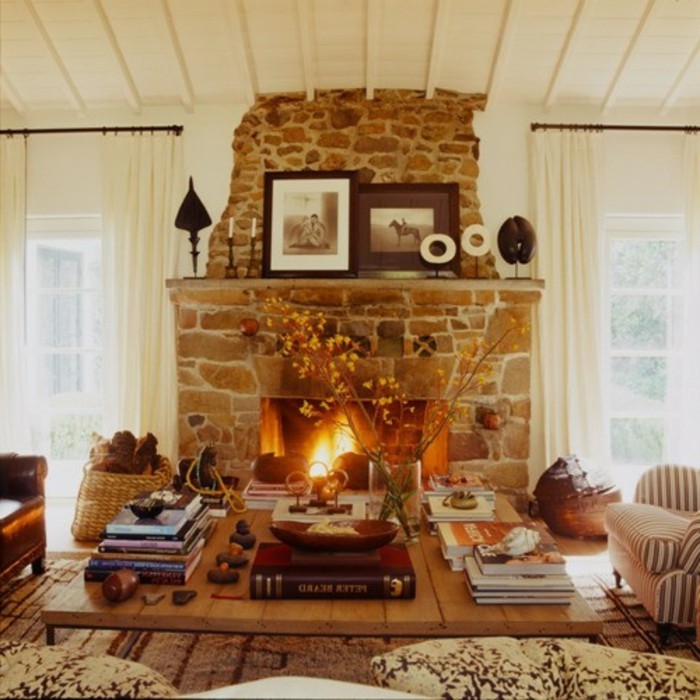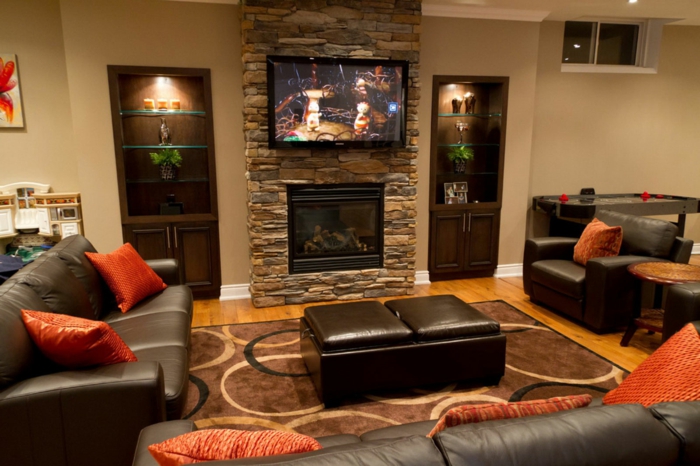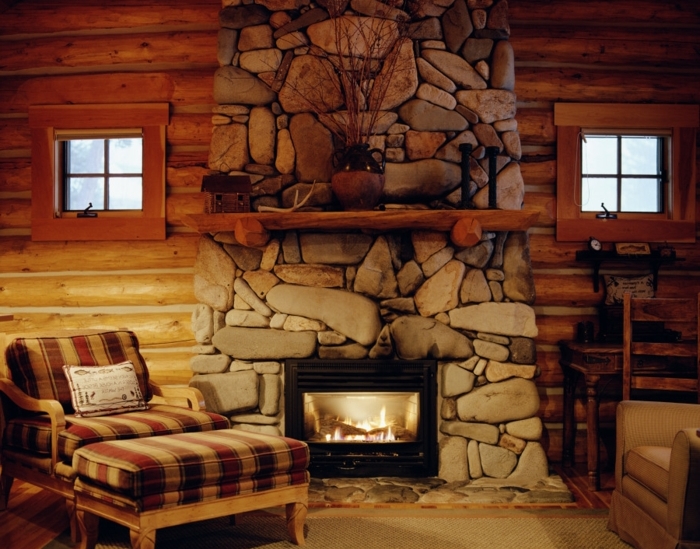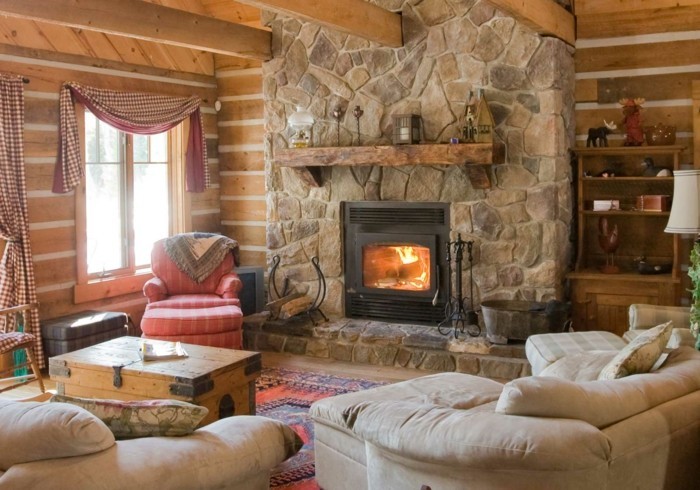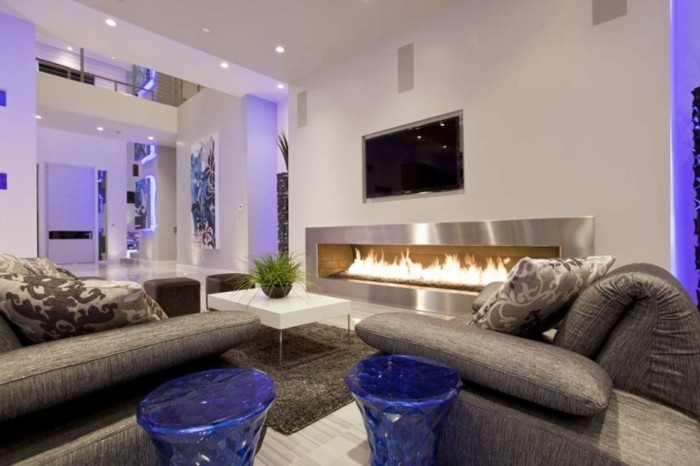Wärme und Gemütlichkeit: Einrichtungstipps rund um den Kamin
Je näher die weihnachtliche Festzeit kommt, desto höher wird der Wunsch der Menschen danach, Gemütlichkeit und Wärme zu Hause zu schaffen. Diese Zuneigung widerspricht dem kalten Wetter außen, das aus der komfortablen Wohnung ganz romantisch und schön aussieht. Was könnte eigentlich besserer Weihnachtsschmuck sein als Schneeflocken, die anmutig schweben und auf alles Mögliche wie Dächer und Straßen landen und dichte Schneehaufen bilden. Versetzen Sie sich jetzt in Ihrem Zuhause mit der Familie kurz vor Weihnachten – alle eilen hin und her und es läuft rasche Vorbereitung auf die Feier. Jetzt stoppen Sie kurz. Niemand bewegt sich, niemand spricht, nur Atem kann man hören und daneben lässt sich das Geräusch des Kamins vernehmen. Ich persönlich möchte dieses warmen und angenehmen Gefühl den ganzen Winter über haben, ja, natürlich nur nicht so leise die ganze Zeit. Diese Wärme, die Harmonie, aber auch die Lebhaftigkeit, die vom Beisein der geliebten Menschen verursacht wird, sind unersetzbar.
Gemütlichkeit und Wärme zu Hause den ganzen Winter lang
In dieser schönen Atmosphäre gibt es eine Sache, die man nicht unterschätzen sollte – seine Majestät der Kamin. Ohne ihn gäbe es keine Wärme zu Hause, folglich auch keine Gemütlichkeit. Man kann, ja, die Wohnung durch andere Geräte aufwärmen, nichts aber trägt so sehr zu dem Wohlgefühl bei. Wenn Sie einen in der eigenen Wohnung schon haben, dann bin ich sicher, dass Sie sich darauf nicht mehr verzichten können und wollen. Wenn nicht – es ist die letzte Zeit sich diese Bequemlichkeit zu besorgen. Bei der Suche des perfekten Kamins gibt es aber viele Kleinigkeiten, die Sie wissen müssen. Es ist gar nicht so einfach das Ideal für Ihre Wohnung zu entdecken. Auf dem Markt gibt es zwar tausende von Angebote, aber nur wenige sind Ihrer Wohnung entsprechend.
Kinoabend mit der Familie in luxuriöser und stilvoller Umgebung
Bei der Wahl eines neuen Kaminofens sollen wir zuerst einmal die Einrichtung des Hauses berücksichtigen. Farben und Stoffe müssen kombiniert sein, damit Sie sich eine angenehme Umgebung sichern. Nämlich sie ist der Schlüssel zum Wohlgefühl. Haben Sie vielleicht einige Zweifel oder brauchen Sie Hilfe? Unser Team ratet Ihnen sich an dem Online Shop www.ofen.de zu wenden. Dort findet man ganz schnell und einfach die besten Angebote und erfährt viel rund um den Kamin – wie zum Beispiel welcher Zubehör nötig ist, welche sind die aktuellsten Modelle und wie könnte man am besten einen Kamin mit der anderen Wohnideen in der Wohnung zusammenstellen. Wenn es Ihnen an Inspiration fehlt oder Sie zu viele Fragen ohne Antwort haben, bietet der Shop auch eine persönliche Beratung. Sammeln Sie gerne selbstständig Ideen, die Sie später mit Fachleuten besprechen können. So würden Sie den Eindruck machen, als ob Sie auch mindestens teilweise Experte sind.
Neben einem Kamin kann man sich sogar alleine zu Hause wohl fühlen
Schritt für Schritt kommen wir dem Endeffekt näher. Also der perfekten Ausrüstung Ihrer Wohnung und dem stetigen Wohlgefühl in Ihrem Zuhause. Wenn Sie einen Kamin kaufen, sollen Sie im Voraus wissen zu welchem Zweck Sie ihn brauchen – Aufheizen, Kochen oder vor allem als schöne Innenarchitektur Deko. Wir raten noch, dass Sie sich in der Qualitätsgarantie vergewissern, sogar wenn es nur um Kaminzubehör geht. Unterschätzen Sie diese Frage nicht und sichern sich und Ihrer Familie nur die beste Qualität und vollste Gemütlichkeit.
Kaminofen sorgt für authentischen Landhausstil bei der Einrichtung
Kaminofen findet Platz noch in der modernen und luxuriösen Wohnung
